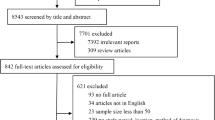Abstract
At 2 days of age, each of 20 chickens was perorally or intracloacally infected with 3 × 105 oocysts of Cryptosporidium baileyi and maintained for 13 days post infection. In parallel, 20 embryonated chicken eggs were inoculated with 3 × 105 oocysts at day 10 of embryonation and were incubated for a further 7 days. The average reproduction rates in the two groups of chickens were ×560 after peroral infection and ×533 after intracloacal infection as compared with ×256 in the eggs. Although the rate of reproduction of parasites seen in the eggs was only about 50% of that observed in chickens, large numbers of oocysts could be harvested (on average, 77 million per egg versus 161 and 168 million from chickens). Nearly the same number of oocysts could be obtained from two eggs as compared with one chicken. The use of embryonated eggs accommodates the sense of animal-protection regulations, is less expensive, and allows the isolation of oocysts under sterile conditions.
Similar content being viewed by others
Author information
Authors and Affiliations
Additional information
Received: 15 February 1997 / Accepted: 18 March 1997
Rights and permissions
About this article
Cite this article
Wunderlin, E., Wild, P. & Eckert, J. Comparative reproduction of Cryptosporidium baileyi in embryonated eggs and in chickens. Parasitol Res 83, 712–715 (1997). https://doi.org/10.1007/s004360050324
Issue Date:
DOI: https://doi.org/10.1007/s004360050324




